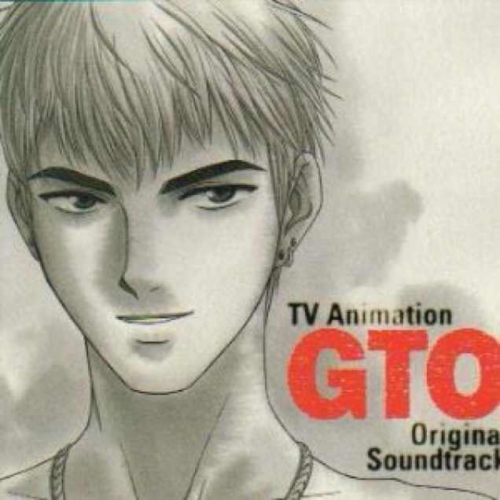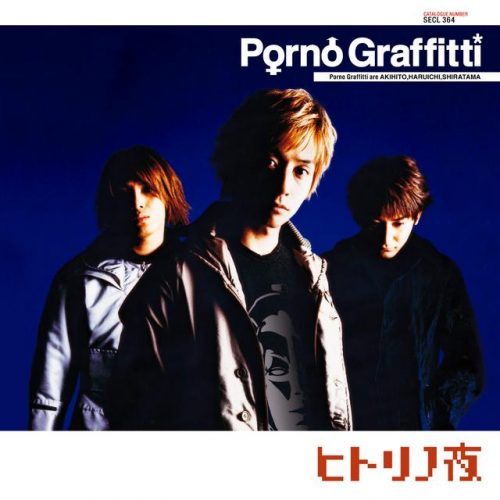
Some of you may be familiar with Extreme’s 1990 album, Pornograffiti. In case some of you didn’t know, it inspired the name of a popular rock duo from Japan. The lead member of the duo is Haruichi Shindo from Hiroshima. He does a huge bulk of the composing, writing, instruments, and the back up lyrics. Prior to debuting as Porno Graffiti, Haruichi started the duo with Akihito Okano, his cousin, as No Score because they couldn’t read scores when they formed. When they were starting, it was obvious that Akihito was the better singer so he took the role as the lead singer. However, Okano would depart in 2004 to pursue a solo career and Masami Shiratama has since taken that role.
Hitori no Yoru

Though they officially started in 1994, Porno Graffiti didn’t get their big break until Hitori no Yoru became the second opening to GTO in 2000. It introduced audiences to their inspirations that makes you think of Elvis Presley’s classic, Jailhouse Rock. The song captures the intensity, comedy, and romanticism of GTO and that’s what made it a hit. As a band that was just up-and-coming, Hitori no Yoru debuted at number 12 on the Oricon charts and they started to gain fame.
Melissa
Three years later, they once again made it big in the world of anime with Melissa, the first opening theme to the 2003 Fullmetal Alchemist series, as it also debuted at number 2 on the Oricon charts. While much of their 1950s rhythm and blues style of rock is still prevalent in Melissa, it is more appropriately emotional as opposed to the upbeat feel of Hitori no Yoru. When you hear the song and analyze the lyrics, it captures Fullmetal Alchemist’s atmosphere of teenage innocence while seeking out one’s goals no matter the cost.
Winding Road
In 2006, with Masami Shiratama as the new singer, Porno Graffiti once again contributes to the world of anime with Winding Road, the ending theme to Ayakashi Ayashi. As opposed to the heavy guitar riffs viewers heard through Hitori no Yoru and Melissa, it has more of a heavy blues feel with a heavy emphasis on a harmonic melody to reflect the melodramatic nature of Ayakashi Ayashi. Last, this song would be their first anime contribution that debuted at number 1 on the Oricon charts.
Koyoi, Tsuki ga Miezu Tomo and Anima Rossa
As the 2000s progressed, so did their contributions to mainstream anime. They contributed two songs to the Bleach Franchise - Koyoi, Tsuki ga Miezu Tomo (which debuted at number 2 on the Oricon), the ending theme for the third feature film, and Anima Rossa (which debuted at number 3 on the Oricon) as the series 11th opening theme. Koyoi, Tsuki ga Miezu tomo further amplifies the emotional delivery of what you hear in Melissa to 11 and has more of a modern touch to the composition. As for Anima Rossa, it has more of a 1970s funk with its hook, but its melody and singing are very much in tune with contemporary J-rock.
The Day
As of last year, Porno Graffiti still continues to contribute to internationally recognized titles, most notably My Hero Academia with The Day. Much like Melissa, it emphasizes more on the emotion of hard work and sacrifice. In comparison to their other earlier works, The Day feels 100% like a modern J-rock song by emphasizing on very heavy guitar riffs. The delivery of the chorus feels very fresh compared to the upbeat feel of both Hitori no Yoru and Melissa but does a perfect job of capturing the essence of My Hero Academia.
Final Thoughts

Anyone can easily conclude that with a name like Porno Graffiti, it’s going to be a hard sell in native English speaking countries in relation to getting their work as theme songs to animated programs for minors. In a country like Japan where they don’t speak English, they can easily get away with it. With a name like Porno Graffiti, a good number of Western fans could think that they produce songs akin to the politically incorrect nature of Steel Panther. While Steel Panther is an excellent band in being both a parody and true tribute to glam metal, Porno Graffiti also does an excellent job of largely being a tribute to classic rock from the 50s, but with their own spin to it.

